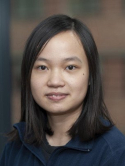Single-cell genomic variation induced by mutational processes in cancer Journal Article
| Authors: | Funnell, T.; O’Flanagan, C. H.; Williams, M. J.; McPherson, A.; McKinney, S.; Kabeer, F.; Lee, H.; Salehi, S.; Vázquez-García, I.; Shi, H.; Leventhal, E.; Masud, T.; Eirew, P.; Yap, D.; Zhang, A. W.; Lim, J. L. P.; Wang, B.; Brimhall, J.; Biele, J.; Ting, J.; Au, V.; Van Vliet, M.; Liu, Y. F.; Beatty, S.; Lai, D.; Pham, J.; Grewal, D.; Abrams, D.; Havasov, E.; Leung, S.; Bojilova, V.; Moore, R. A.; Rusk, N.; Uhlitz, F.; Ceglia, N.; Weiner, A. C.; Zaikova, E.; Douglas, J. M.; Zamarin, D.; Weigelt, B.; Kim, S. H.; Da Cruz Paula, A.; Reis-Filho, J. S.; Martin, S. D.; Li, Y.; Xu, H.; de Algara, T. R.; Lee, S. R.; Llanos, V. C.; Huntsman, D. G.; McAlpine, J. N.; IMAXT Consortium; Shah, S. P.; Aparicio, S. |
| Article Title: | Single-cell genomic variation induced by mutational processes in cancer |
| Abstract: | How cell-to-cell copy number alterations that underpin genomic instability1 in human cancers drive genomic and phenotypic variation, and consequently the evolution of cancer2, remains understudied. Here, by applying scaled single-cell whole-genome sequencing3 to wild-type, TP53-deficient and TP53-deficient;BRCA1-deficient or TP53-deficient;BRCA2-deficient mammary epithelial cells (13,818 genomes), and to primary triple-negative breast cancer (TNBC) and high-grade serous ovarian cancer (HGSC) cells (22,057 genomes), we identify three distinct ‘foreground’ mutational patterns that are defined by cell-to-cell structural variation. Cell- and clone-specific high-level amplifications, parallel haplotype-specific copy number alterations and copy number segment length variation (serrate structural variations) had measurable phenotypic and evolutionary consequences. In TNBC and HGSC, clone-specific high-level amplifications in known oncogenes were highly prevalent in tumours bearing fold-back inversions, relative to tumours with homologous recombination deficiency, and were associated with increased clone-to-clone phenotypic variation. Parallel haplotype-specific alterations were also commonly observed, leading to phylogenetic evolutionary diversity and clone-specific mono-allelic expression. Serrate variants were increased in tumours with fold-back inversions and were highly correlated with increased genomic diversity of cellular populations. Together, our findings show that cell-to-cell structural variation contributes to the origins of phenotypic and evolutionary diversity in TNBC and HGSC, and provide insight into the genomic and mutational states of individual cancer cells. © 2022, The Author(s). |
| Keywords: | genetics; mutation; ovarian neoplasms; phenotype; gene expression; pathology; phylogenetics; ovary tumor; genomics; genome; tumor; phylogeny; recombination; cell; triple negative breast cancer; cancer; humans; human; female; triple negative breast neoplasms |
| Journal Title: | Nature |
| Volume: | 612 |
| Issue: | 7938 |
| ISSN: | 0028-0836 |
| Publisher: | Nature Publishing Group |
| Date Published: | 2022-12-01 |
| Start Page: | 106 |
| End Page: | 115 |
| Language: | English |
| DOI: | 10.1038/s41586-022-05249-0 |
| PUBMED: | 36289342 |
| PROVIDER: | scopus |
| PMCID: | PMC9712114 |
| DOI/URL: | |
| Notes: | Article -- Export Date: 3 January 2023 -- Source: Scopus |
Altmetric
Citation Impact
BMJ Impact Analytics
MSK Authors
Related MSK Work
























